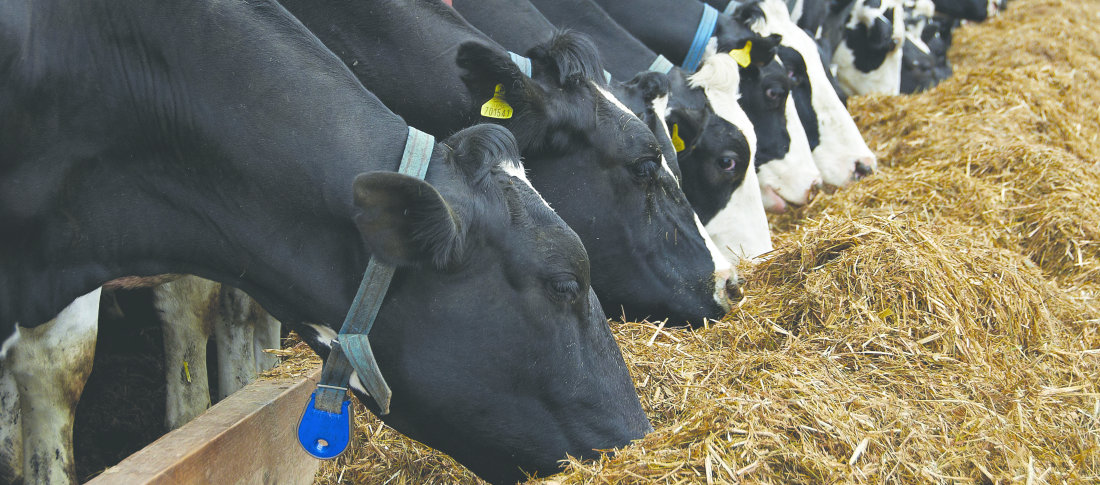Optimum body condition makes your cows more profitable. Here’s the easy way to measure it and - more importantly - maintain it.
You know your herd better than anyone. You know that each cow is slightly different. You even know that they have their own temperaments. But did you know that maintaining each cow’s optimum body condition score can make your herd more profitable? It’s true. That’s why body condition scoring is so important.
Why does body condition matter?
It goes without saying. You want your herd to be as productive and profitable as possible. That can only happen if your cows are healthy. And it turns out that body condition is a surprisingly effective barometer of each cow’s health and wellbeing.
Cows that are too fat or too thin may have underlying nutritional deficiencies or health problems. Yet an optimum body condition influences productivity, reproductive health and longevity. In short: the body condition of your herd can have a big impact on your margins.
What is the five point scale?
The five-point scale is a means of ensuring each cow’s body condition is measured consistently and objectively. After a hands-on assessment of the levels of fat covering the short ribs and tail head area, each cow is assigned a score based on the following scale.
- Cow is too thin with no body reserves to draw on
- Cow lacks reserves but may be able to achieve peak productivity
2.5 to 3.0 - this is the ideal condition - cow is fit to cope with most stages of lactation
3.5 - cow is at the higher end of the ideal and slightly overweight
4.5 - this cow is carrying too much fat
Here are some examples of cows at each level of the scale.
What happens when a cow is over/under weight and condition?
Just like humans, cows that are carrying too much or too little weight can develop health problems. Overweight cows are more susceptible to metabolic problems and infections. They are also more likely to have difficulties during and after calving.
As for cows that are underweight, you can expect reduced milk production and low milk fat levels partly because they lack the reserves to maintain production. Thin cows also frequently fail to show heat or conceive until they start to regain weight.
How can you prevent your herd being over/under conditioned?
With that in mind, it’s clear that keeping your cows at the optimum body condition score is good for business. Doing that successfully is all about knowing what to avoid. Unsurprisingly the mistakes that lead to over or under conditioning are mainly related to nutrition.
Check the feeding program. Noticed that one of your cows is a little over or underweight? Then it’s time for some detective work! The first step is to check the feeding program. Focus on dry matter and energy intake. Forage should account for at least 45% of a cow’s total dry matter consumption. Also make sure the feeding sequence, fibre levels, feeding frequency and ration palatability are in order.
Take a look at nutrient profile. The next step is to evaluate protein, mineral and vitamin levels in rations. Also check for levels of bypass and soluble protein as well as starch and fat. Test forages and re-balance rations for each group of cows as needed. Examine feed quality, including particle size of forage and grain as well as the smell and pH of silages and wet commodity feeds.
Increase feed at the right time. The best time to feed extra energy is during early lactation if you are looking to offset negative energy balance. Rumen-protected (bypass) fats can be added up to 2-3% of ration dry matter andtotal fat in the ration may need to be 6-8% of dry matter to meet requirements.
Avoid rapid fluctuations in body condition. Pay close attention to cows during lactation, especially the latter stages and during the dry period. Large amounts of grain can cause animals to become over-conditioned, increasing their susceptibility to health problems.
As we know, one of your many goals as a dairy farmer is to try and ensure your herd maintains optimum body condition. It’s good for performance. And what’s good for performance is good for profits. Megalac can help.
How?
Well, Megalac is a rumen-protected fat. It combines natural plant oil with calcium. And it’s this calcium that protects the fat from breaking down in the rumen. So - unlike many other oils - there is no negative effect on rumen function.
This fat is then digested in the acidic lower gut, with near 100% efficiency. The cow uses the energy in Megalac for milk production and performance and can help modify body condition score.
Best of all? Megalac has the highest independently-measured net energy value of any feedstuff. It’s perfect to feed when your cows’ milk yield is increasing but her appetite is low: for example, in early lactation when cows can lose condition. Megalac increases the energy density of rations, supplying more energy despite lower intakes. That’s what makes it such a useful ingredient to manage body condition and reduce losses.
Over to you...
Regular body condition scoring of your herd is a no-brainer. It’s a quick and easy way to monitor changes in body fat and take corrective action before health or performance is affected. And the rewards of maintaining optimum condition are compelling: higher yields, better health, bigger profits.
What are you waiting for?
